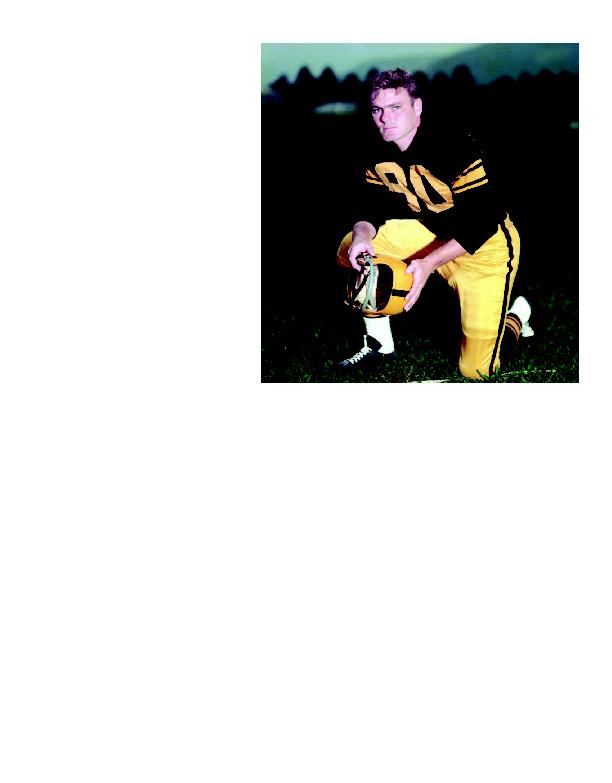
week before he received an honorary degree from his
alma mater.
which fills my life -- my children, my grandchildren,"
he said. "I've had a wonderful, privileged life and am
very aware that a lot of people would gladly trade
places. That's more than enough satisfaction."
owner of the Steelers since the 1940s. "Maybe it's
because the Steelers weren't great during the '50s.
There were also a number of great defensive backs
from that era who were already in the Hall -- Jack
Christiansen, Yale Lary, Emlen Tunnell, 'Night Train'
Lane. But Jack belongs, no doubt."
injury, Butler retired with 52 interceptions, the second
most in NFL history at the time, when teams ran far
more than they passed. (It still ranks 26th all-time.)
forced per game (.602; minimum 100 games played).
final one he returned for a touchdown in a 14-13 win
over the Redskins in 1953.
NFL team of the 1950s. He was named to the Steelers' 75th
Anniversary team in 2007.
"Had he played for the Lions or Browns (of the 1950s), he
vice president of the Steelers.
looked during their 15 years of initial eligibility -- put forth Butler
and former Lions and Redskins offensive lineman Dick Stanfel for
nomination to the Hall. They were then considered with the 15
modern-era finalists during voting on Super Bowl Saturday.
member of the Steelers' family his entire life, McGinley saw most
of the games Butler played at Forbes Field and wore Butler's No.
80 jersey as a kid growing up in Pittsburgh.
Jack has been, it was very satisfying to see, to finally see him get
the recognition he deserves," McGinley said. "I was really happy
for the whole family."
when his roommates talked him into going out for the 1947 team
at St. Bonaventure. A guy whose parents sent him to school in
Niagara Falls, Ont. -- to be a priest.
owner and longtime family friend. When told that Rooney's
brother, Fr. Silas, was the athletic director at St. Bonaventure,
"that was good enough for me," Butler said.
-- encouraged him to try out for the team. Once he figured
where all the pads went, he had to figure out what position to
play. Despite being only 5-10, 170 lbs. at the time, he told the
coaches he played guard because that's what the guy in front of
him in line said; he didn't have a clue what the positions were.
break ECAC records for receiving. The team went 26-9-1 in
Butler's four years. A year after Butler graduated, St. Bonaventure
dropped football, forcing Marchibroda to finish his college career
at the University of Detroit.
juggernaut in the early 1990s, would be the No. 1 draft pick of
the Steelers in 1953. In the 1951 NFL Draft, no one was interested
camp at St. Bonaventure from 1952-1957. Fr. Silas Rooney, SBU's athletic direc-
tor, was the brother of Pittsburgh owner Art Rooney.
N
2
2